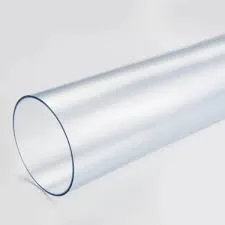Sep . 05, 2024 13:13 Back to list
High-Quality CPVC Pipe Fittings for Durable Plumbing Solutions
Understanding CPVC Pipe Fittings A Comprehensive Guide
Chlorinated Polyvinyl Chloride (CPVC) has gained significant popularity in the plumbing and construction industries due to its excellent properties. CPVC pipe fittings are a crucial component of CPVC piping systems, offering a range of advantages for both residential and commercial applications. In this article, we will explore the characteristics, benefits, installation methods, and applications of CPVC pipe fittings.
What is CPVC?
CPVC, or Chlorinated Polyvinyl Chloride, is a thermoplastic used widely for hot and cold water plumbing systems. It is derived from PVC, which has been chlorinated to enhance its heat resistance and chemical stability. CPVC can withstand temperatures up to 200°F (93°C), making it suitable for transporting hot water in residential and industrial settings.
Benefits of CPVC Pipe Fittings
1. Corrosion Resistance One of the most significant advantages of CPVC pipe fittings is their resistance to corrosion. Unlike metal fittings, CPVC doesn’t rust or corrode, which ensures a longer lifespan and reduces the risk of leaks and water contamination.
2. Ease of Installation CPVC fittings are lightweight and easy to handle, allowing for quick installations with minimal labor. They can be joined using solvent cement, making the process simpler compared to welding or threading metal fittings.
3. Thermal Stability CPVC can withstand high temperatures, which makes it ideal for hot water systems. Its thermal stability reduces the risk of pipe failure, ensuring a reliable plumbing system for homes and businesses.
4. Cost-Effectiveness Compared to other piping materials such as metal or copper, CPVC is often more affordable. The lower material cost combined with reduced labor expenses for installation contributes to overall savings.
5. Chemical Resistance CPVC fittings offer excellent resistance to a wide range of corrosive materials, making them suitable for industrial applications where harsh chemicals are present.
Installation of CPVC Pipe Fittings
cpvc pipe fittings

Installing CPVC pipe fittings involves a few straightforward steps
1. Cutting the Pipe Use a fine-toothed saw to cut the pipe to the desired length. Ensure the cut is straight to facilitate a proper fit.
2. Deburring Remove any burrs or rough edges from the cut ends using a deburring tool. This step is essential to prevent leaks during installation.
3. Dry Fit Assemble the fittings without adhesive to check the fit and alignment.
4. Applying Solvent Cement Apply a thin layer of solvent cement to both the pipe and the fitting. Make sure to follow the manufacturer’s instructions regarding the application of the adhesive.
5. Joining Quickly push the pipe into the fitting while twisting slightly to ensure an even application of solvent cement. Hold the joint for a few seconds to allow it to set.
6. Curing Time Allow the joint to cure for the recommended time before pressurizing the system.
Applications of CPVC Pipe Fittings
CPVC pipe fittings are extensively used in various applications, including
- Residential plumbing systems for hot and cold water distribution - Commercial buildings requiring durable and reliable piping solutions - Industrial processes that involve corrosive chemicals - Fire sprinkler systems, owing to their heat resistance
In conclusion, CPVC pipe fittings offer a robust and versatile solution for modern plumbing needs. Their unique properties and ease of installation make them an excellent choice for a wide range of applications. As industries continue to innovate, CPVC remains at the forefront of delivering reliable and efficient piping solutions.
-
PVC Grey Sheet for Extraction: Chemical Resistant & Durable
NewsAug.19,2025
-
Durable PVC Pipe Fittings for Plumbing & Irrigation Needs
NewsAug.18,2025
-
HDPE Steel Belt Reinforced Spiral Corrugated Pipe | High Strength
NewsAug.17,2025
-
HDPE Pipe Fittings: Durable, Leak-Proof Solutions
NewsAug.16,2025
-
Premium CPVC Sheet: High-Temp & Chemical Resistant Solutions
NewsAug.15,2025
-
Durable PPR Pipe for Hot & Cold Water Systems - Easy Install
NewsAug.14,2025

